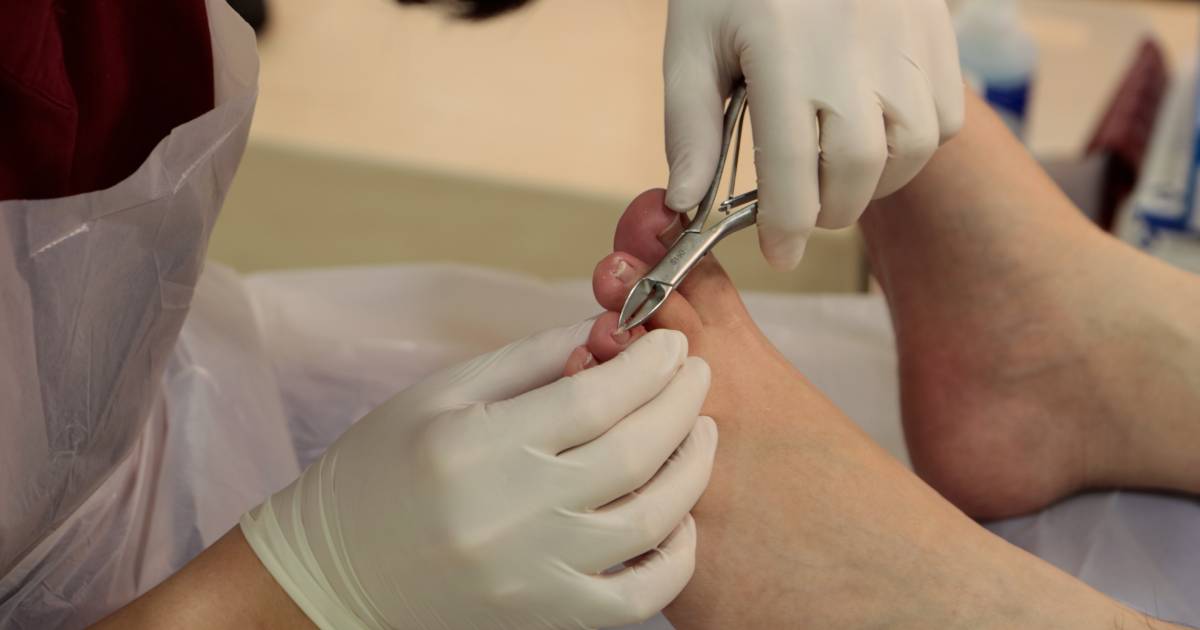How Can A Podiatrist Help With Routine Nail and Skin Care?
- Proper trimming to avoid ingrown toenails
- Check for toenail conditions
- Advice on long-term care
- Callus debridement and corn removal
Podiatrists are trained professionals of the toes, feet, ankles, legs, and associated structures. Podiatrists are skilled at carrying out routine nail care that reduce the chances of harm or injury around the nails from improper nail cutting. Harmful toenail conditions can also be identified during a nail care session, so the appropriate care can be given as soon as possible.
Some conditions that are frequently identified during a foot health inspection may require specialised care and intervention for permanent resolution. These include:
- Ingrown toenails
- Hard corn
- Plantar warts
- Fungal nail or skin infection
Other common nail conditions that are promptly handled in-clinic include fungal and bacterial nail infections, and other systemic nail conditions such as psoriasis, nail trauma, onycholysis, and nail dystrophy.
As podiatrists are healthcare professionals specialising in the management and care for the lower limbs, any foot care performed by a podiatrist is performed in a safe and sterile manner. The approach taken is dependent on the risk status of the patient. Basic foot care includes nail trimming and filing, hard skin and corn removal, and management of localised or spreading infections.
Who Needs Routine Nail Cutting?
Elderly
Elderly patients often have poor eyesight, flexibility, strength, memory, and blood flow to the feet. It is difficult for a patient with lowered mobility to fully care for their lower limb needs, as they may be unable to bend over and reach their toes. Old age is often accompanied by decreased visual acuity and fine motor control, both of which increase the risk of injury when clipping their nails. This combined with ailing health or chronic condition such as heart disease and diabetes, makes cutting nails in the elderly populace a high-risk task that many podiatrists would recommend professional intervention. On many occasions, patients who attempt self-care wind up cutting their toes, leading to infection and worsening foot status.
Children

A baby’s toenails grow faster than you might expect and will need trimming once or twice a month. Your podiatrist will guide and advise you on gently and accurately cutting your baby’s nails with minimal fuss. As a baby’s feet grow rapidly, it is not uncommon for ingrown toenails to develop. Podiatrists are specialised in handling ingrown toenails in infants and children. Regular maintenance will help prevent ingrown toenails or sharp edges that your child can hurt themselves with.
Teenagers
Adolescents often trim their nails too short or will avoid cutting them all together to save time. Sports and other activities common amongst this age group can also cause or exacerbate any foot or nail injuries, leading to complications over time if left ignored.
Why Is Nail Care Important?
Nails are indicators of our overall health, and changes in them can be tell-tale signs for the presence or onset of systemic diseases. For this reason, it is important to check with a professional if you notice changes in your nails such as:
- Thickening
- Convex or concave nail shape
- Darkening
- Redness
- Fungal infection
- Black colouration
- Surrounding skin becoming red
- Inflammation
- Swelling
- Presence of pus
- Bumps or holes in the nail plate (pitting)
- Crumbling or soft nails
- Ingrown toenails
- Trauma-caused damage
- Lifted toenails from the nail bed
Many minor nail conditions can be easily addressed with the application of cream and medication, or a small non-invasive nail procedure. Routine nail care sessions can also help identify severe nail conditions before the onset of complications and ensure that early intervention measures are taken as the first step towards addressing the condition.
Overall Foot Health Assessment
Podiatrists are specialists when it comes to the assessment of the foot, ankle and lower limb. In particular, they are trained to look for specific, and often minute, differences between two feet. These differences can include swelling, pain, or changes in foot shape or colour. Minor differences or changes in your feet allows your podiatrist to identify and determine if there has been any progression in chronic or systemic diseases such as diabetes or other circulatory illnesses.
The skin of the foot is also checked for signs of thickening skin that could indicate the formation of corns and calluses or areas of abnormal pressure that can lead to tissue breakdown, or fine cracks or abrasions that may cause infection.
Your nails are also highly sensitive to changes within the body. A minor nail change can indicate a systemic condition, localised or spreading infection, neoplastic changes around or on the nail or a trauma caused by biomechanical changes.
Following up with the same practitioner or team of specialists is key to maintaining good foot health as minor changes to the foot and lower limb are more likely to be picked up earlier due to the specialist’s familiarity with the foot.
If there is a need for specialised care, it can usually be initiated by our podiatrists during this appointment if your consent is given.





